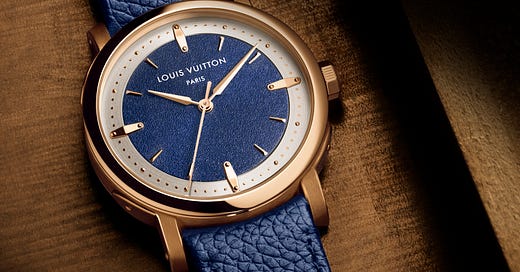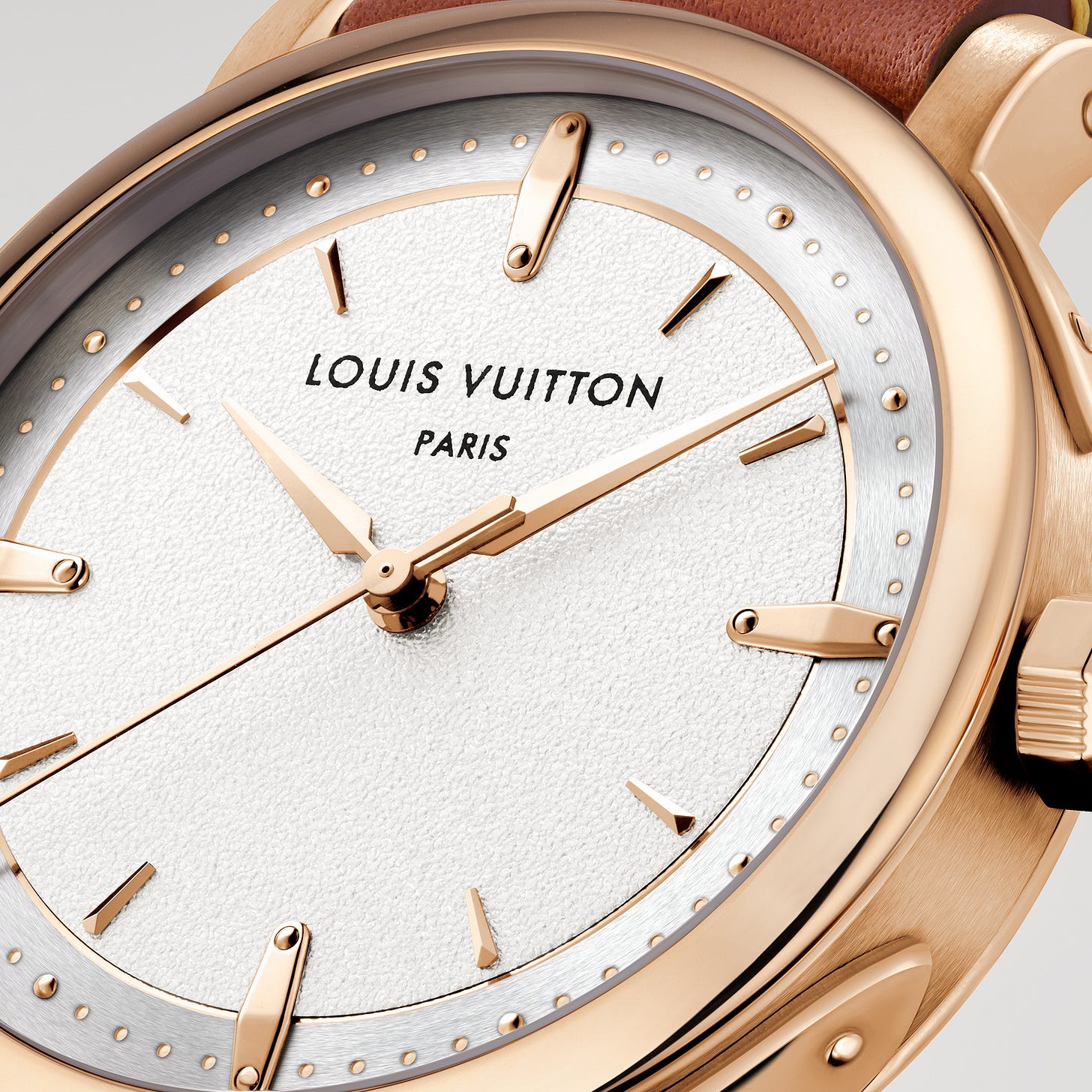Hello and welcome back to The Fourth Wheel, the weekly watch newsletter that is absolutely brimming with Euro fever. Apologies to all my US readers - I can only assume you are on the edge of your seats watching the T20 cricket world cup, or perhaps the Open. As for the rest of the world, may you also have a glorious Summer of Sport. With Le Mans this weekend and Olympic fever ramping up, it might have made sense for me to segue neatly into an essay on sports marketing, brand partnerships and the role of today’s watchmaker in global sport, but I’m afraid I’ve written about the Louis Vuitton Escale instead. Maybe another time!
The Fourth Wheel is a reader-supported publication with no advertising, sponsorship or commercial partnerships to influence its content. It is made possible by the generous support of its readers: if you think watch journalism could do with a voice that exists outside of the usual media dynamic, please consider taking out a paid subscription. You can start with a free trial!
Here’s a little taste of what you might have missed recently:
The Most Incredible Ressence Watches Ever Made
Review: Breitling Chronomat 42 Titanium
Is a COSC Certificate Irrelevant?
Revolution At Bremont
Exclusive Interview: Chronode Founder Jean-Francois Mojon
For the last decade - in fact, for most of my time in the watch industry, which stretches back a bit further to 2011 - it has, perhaps surprisingly, been quite hard to make money selling the kind of watch many people would describe as the archetypal Swiss watch. I’m talking about round-cased simple watches with relatively slim cases, unfussy lugs, leather straps and plain dials; often but not always with feuille hands and Breguet or baton hour markers. Particularly at the luxury end of the industry, these have been left on the bench in favour of 1970s-inspired sports-luxe watches, elevated dive watches and chronograph-led model families.
To judge by the outpouring of praise and admiration for the Louis Vuitton Escale over the last few days, all that has changed. The time-only round watch is back, baby, and its return is nothing short of a strategic masterstroke from billionaire horological visionary Jean Arnault.
Maybe that’s true. Maybe there is evidence that the simple time-only automatic is about to have its day once more, and Arnault is out in front of the wave - and I’ll come to that in a second. Certainly the industry seems to have arrived at the consensus that the dress watch is ‘back’, although I’d like to see some cold hard sales figures to really back that up. Widespread consumer behaviour always lags a little bit behind tastemaker opinion, which sometimes makes journalists and inside experts look remarkably prescient, and sometimes leaves them standing around with their trousers down looking foolish as customers resolutely fail to follow the trend they’ve been told is most definitely happening. I’d say we don’t yet know for certain which one’s true of the Great Dress Watch Renaissance, but in a way it doesn’t matter, because the inner circles of the industry have talked each other into it, and the watches have been made now.
But let’s take it back a step. You might take issue with the basic premise: did the elegant round watch really go anywhere in the first place? Well, yes, actually. Among the ranks of the fallen in the last five to ten years we can count the Girard-Perregaux 1966, the Audemars Piguet Jules Audemars, the Rolex Cellini, the Zenith Elite and the Ulysse Nardin Classico1. Other brands may not have actually discontinued entire collections, but made clear decisions to deprioritise that kind of watch: Vacheron Constantin’s Patrimony and Traditionelle, the Jaeger-LeCoultre Master Control and Master Ultra-Thin, the Patek Philippe Calatrava, A. Lange & Sohne’s Saxonia, the IWC Portugieser, the Piaget Altiplano, the more trad end of Chopard’s LUC family, the Blancpain Villeret and the Breguet Classique. All have been waiting in the wings until very recently; the majority are still there, waiting for their cue. To a greater or lesser extent, the fates of the above brands over the last decade depended on how closely they were identified with that kind of 1950s-inspired classical watch design; many were able to throw their weight behind an integrated-bracelet icon (or hastily create one) or lean heavily into their sporty/contemporary/Art Deco alternatives. The phenomenon isn’t limited to mainstream brands - compare how quickly and effectively indie brands like Czapek, H. Moser and Laurent Ferrier were able to execute the same shift.
But Louis Vuitton, having boldly entered the integrated bracelet fray with the redesigned Tambour (just as the segment starts to cool off?), thinks the time is right to put its money on a revamp of the Escale.
I haven’t seen the watches up close, so I’m limited in what I can say. My impressions so far are of something that on paper presents as a rival to many of the watches mentioned above, but in reality is quite particular, almost idiosyncratic. The rivet-styled lugs and dial markers are a feature rather than a bug when it comes to Louis Vuitton, as m’learned friend Jack Forster is fond of saying, but I find they contribute to a sense of mass and heft that’s incompatible with the notion of a dress watch, which Jean Arnault says it is, quoted by Wei Koh at Revolution. We’ll be returning to that article in a moment.
Keep reading with a 7-day free trial
Subscribe to The Fourth Wheel to keep reading this post and get 7 days of free access to the full post archives.






